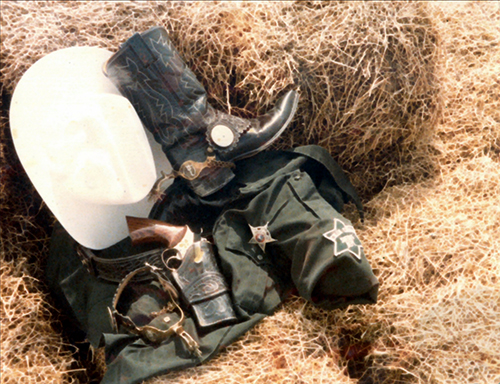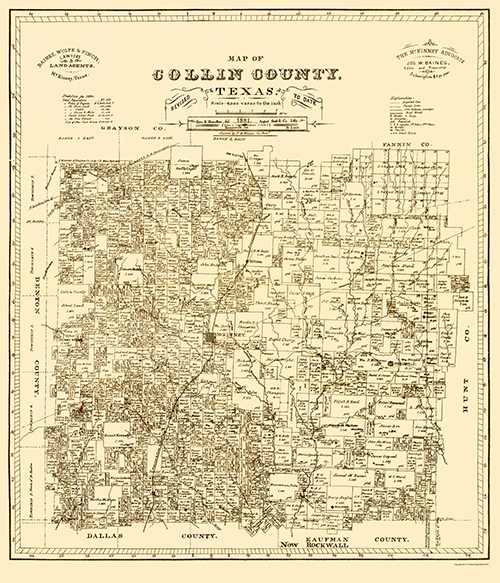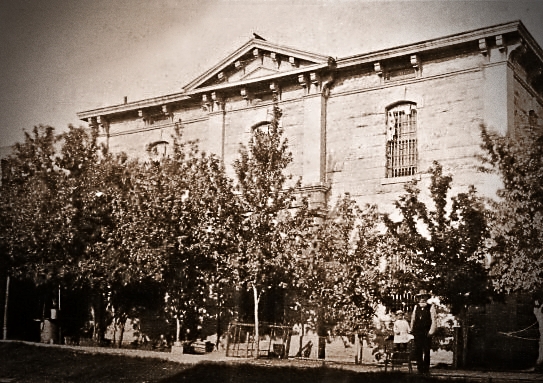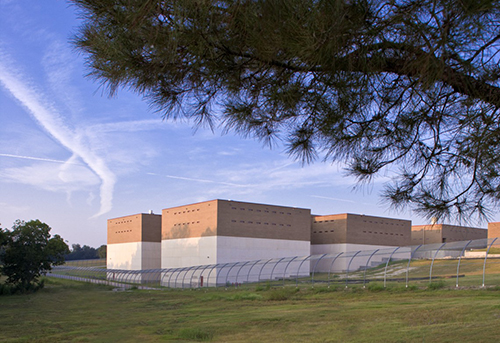
We, the men and women of the Collin County Sheriff's Office, believe that our fundamental duty is to serve and protect the citizens of Collin County with fairness, compassion, and respect.
We demand excellence in the quality of our law enforcement, stressing professionalism, integrity, and timeliness, so that those we serve may feel secure.
We provide equal enforcement and protection of the law without prejudice or favor.
We promote the setting of goals in partnership with the community, and prioritize and address problems based on the concerns of the community.
Committed to continuous improvement in law enforcement, we promote and utilize the most modern techniques available.
Collin County Sheriff's Office

In Texas, the Sheriff is a constitutionally created office with duties prescribed by the Texas legislature (Tex. Const. Art. V, Sec. 23). Although often referred to by many as the "Sheriff's Department", the correct title is "Office of the Sheriff" and is referred to as such in Collin County. The Sheriff is the chief law enforcement officer for the county and is responsible for operating the county jails (including the safekeeping of inmates and operation of the jail commissary), investigating crimes, traffic enforcement, and maintaining communications with other law enforcement organizations. The Sheriff has countywide jurisdiction but, typically, most sheriff offices concentrate their activities outside city limits where municipal officers have no jurisdiction to operate.
The Sheriff is elected every four years and aids in the security of the courthouse and its personnel, including every county and district court. The Sheriff accepts bail for prisoners in his custody, serves a variety of judicial process and notices, provides for their return, collects fees for such services, and is responsible for property held or seized under such actions. The Sheriff is responsible for executing subpoenas, carrying out execution of judgments, executing and returning writs of garnishments, serving temporary restraining orders, executing writs of attachment and writs of sequestration and serving summons to persons to report for grand jury duties.

The Sheriff is charged with operating a centralized sex offender registration office to monitor sex offenders residing in the unincorporated areas of the county. The Sheriff may also apply to a justice court for a warrant to seize animals being treated cruelly. Finally, the Sheriff may conduct sales of seized and forfeited property, property being sold at auction for failure to pay property taxes, and property sold to satisfy judgments in civil cases.
Collin County, Texas, was founded in 1846 when Texas became a state. The county is located north of Dallas County, and about 30 miles south of the Red River. Both the county and the county seat were named after Collin McKinney, one of the five men who drafted the Texas Declaration of Independence and the oldest of the 59 men who signed it.
Here are some dates of note in Collin County's history:
The first county election for Collin County was held July 13, 1846.
The first District Court for Collin County was opened October 21, 1846.
The first county seat for Collin County was "Buckner" and was located about four miles northwest of McKinney.
The county seat was moved to McKinney in 1848.
Past Sheriffs
Historic Collin County Prison
The Old Collin County Prison is one of Texas' oldest nineteenth century county jails substantially in original condition. It is a Victorian Italianate structure designed by Austin architect F. E. Ruffini. The prison, completed in 1880, is constructed of rough-cut blocks of fossilized limestone quarried at Squeeze Penny.

This building was always called "The Prison." It wasn't called a jail. The prison keeper's family lived in the building with the inmates. His wife fixed meals for the inmates and washed their clothes.
The building was originally constructed as a two-story, T-plan building. The two-story front portion of the building contained the jailer's quarters while the mid-portion of the T contained the cellblocks. Prior to the prison's recent rehabilitation, the building had undergone two major renovations, one in 1900 and another 1939. The 1900 renovation added new detention cells while the other cells were restored to perfect condition.
In order to carry out executions, a dungeon-like cell with a trap door was installed. At the time the prison could house 50 prisoners in 8 rooms. A.J. Atkinson, "Uncle Andy," was the jailer. November 17, 1922 Ezell Stepp, hanged for the murder of Hardy Mills, was the last man to be legally executed in Collin County. He was hanged from gallows constructed beside the Collin County Prison....[This was one of the last county hangings in the state before the state started doing them in 1922.]
In 1939 the 1st and 2nd floor cellblock levels were renovated, modernized and the north wall of the cellblock area was extended to the north to create more floor space. This work was overseen by architect John Astin Perkins of McKinney. It is not clear if a dungeon or basement was filled in during this renovation. The prison closed in 1979 due to an increase in the county's population and prison reforms that demanded better conditions for prisoners.
In 1983 the prison was listed as a contributing structure to the McKinney commercial Historic District as part of the National Register of Historic Places. The building is a Recorded Texas Historic Landmark.
Current Sheriff's Office Facility History

In 1988, a Citizens' Advisory Committee made up of 29 Collin County citizens was established to review the needs for the future of the Collin County Sheriff's Office and Detention Facility. In 10 months, the Committee recommended to Commissioners Court that a completely new detention facility and Sheriff's office was needed. Commissioners Court approved the Citizens' Advisory Committee's recommendations.
The Collin County Sheriff's Office and Detention Facility is the result of a six-year effort by the Sheriff's Office, other county personnel, and citizens of Collin County to provide this community with one of the finest, state-of-the-art, full service law enforcement facilities in the United States. Ground was broken in January 1992 with construction starting in March 1992. We moved into the Sheriff's Office complex in January 1994 and the Detention Facility was opened in March 1994.
The Sheriff's Office is physically separated from the detention facility by a plaza entryway. Offices and staff for the following services and functions are housed in the sheriff's building: administration, support services (dispatch and communications), field operations (patrol civil, warrants, mental health, and criminal investigation), fusion center, and staff services. The building also has a lower level parking garage for county-owned vehicles.
The detention facility serves as the support facility for the inmate housing clusters, which will ultimately manage an estimated 1,600 inmates at build-out. Access to and from the building and housing clusters is provided by two separate corridors, the first of which is designated for use by staff and inmates, the other is for visitors and maintenance personnel. The following areas are contained in the detention building: visitor/public reception, administrative and staff offices, conference rooms, classrooms, staff dining, physical training room, staff locker rooms, library, inmate medical clinic, food and laundry service areas, receiving and warehousing, inmate visiting, and inmate processing.